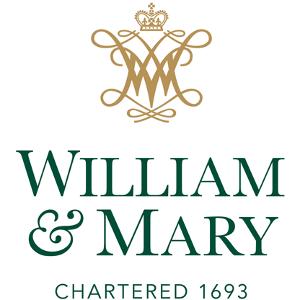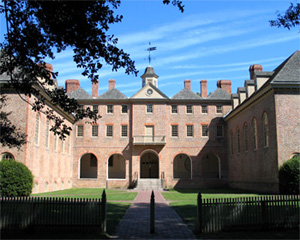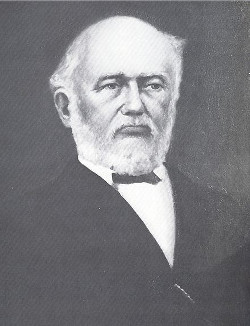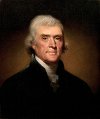Where silver always beats gold!

10/24/2016
Updated on 09/19/2022

“Harvard was Old Harvard when William & Mary was still a pup. And Harvard will be Harvard still when William & Mary is all gone up…”
Okay, I swapped out Yale1 for William & Mary for the sake of the article, but the statement is no less true. The College of William & Mary, chartered in 1693, is the second-oldest institution of higher learning in the United States—second only to Harvard University, which was established in 1636. Although it’s the second-oldest college in the U.S., William & Mary isn’t without its own firsts: it was the first to receive a Royal Charter; the first U.S. college to become a university; the first law school in the U.S.
When comparing the history of William & Mary to Harvard’s, you can say that Harvard very much benefited from, among other things, its location. Situated in Cambridge, Massachusetts, just across the Charles River from Boston, Harvard throughout its history has never been shot up or abused by marauding armies. Although there was the time during the American Revolution in 1775/1776 when Massachusetts militia surrounded the British in Boston, Harvard itself came out with its ivy quite intact, and has since remained unmolested. The same thing cannot be said for William & Mary, which is located in Williamsburg, VA, a lovely and picturesque place that unfortunately suffered terrible abuse during the U.S. Civil War.

Sir Christoper Wren Building, the main college building at William & Mary
The Sir Christopher Wren Building2 or “College Building” as it was known until 1931, was used during the Civil War by the Confederacy as a barracks and hospital. When the Union army marched in and took over the campus, they too used the Wren Building as a hospital, along with other buildings on the campus. Although it wasn’t outright destroyed by the Union army, the soldiers weren’t exactly delicate in their treatment of William & Mary. Several buildings in the college were damaged, including the Wren Building3, which was all but burned down and gutted by the soldiers who occupied the grounds. After the war, William & Mary was left a wreck of its former self with little chance of returning to its days as an institution of higher learning. How the college eventually regained its academic fortitude was largely through the efforts of a man named Benjamin Stoddert Ewell who was a firm believer in higher education.
Ewell was a Virginian, a military officer, and an educator. Born in Washington, DC, in 1810, Ewell came from a family that had strong connections to the military and government (his granddad was the first Secretary of the United States Navy). He graduated from West Point in 1832 and stayed on to teach mathematics, before leaving his post for a series of unrelated jobs. He later returned to academia and took a position as a mathematics professor and acting college president at William & Mary in 1848. A well-respected, and generally well-liked guy by most accounts, Ewell was made president-for-life of the college in 1854.

Benjamin Stoddert Ewell, the guy who saved William & Mary
Things seemed pretty well for the next 6 or so years until Virginia in 1861 up and decided to secede along with the rest of the South. As things went with the idealistic Virginian student body, a good many of the William & Mary students got caught up in the secessionist fervor and romanticism of the period. As a result, many decided that their youths would be better spent shooting at Union soldiers rather than reading books about art and philosophy. This caused a sizable decline in enrollment, which compelled William & Mary, in 1861, to close for the duration of the Civil War. Ewell, who was against secession, felt duty-bound to defend his home and college. So in early 1861, he became commander of the college militia, and later joined the Confederate regular army.
When the Civil War ended in 1865, things for William & Mary didn’t exactly get back to their antebellum normal. Ravaged by war both physically and economically, there wasn’t really any money or resource available in Virginia to get the school back to the way it was. Plus it wasn’t like there were many students around—a lot of the young southern gentlemen who would have made up the student body were likely killed in battle or died from war-related disease. Ewell, who had returned from the war, was determined not to let the war finish off the college he came to love. Putting his money where his heart and mind were, Ewell used his own funds to help cover the school’s operating expenses, which allowed the College of William & Mary to re- open in 1869. Sadly, the College didn’t stay open very long.
Despite Ewell’s contributions, enrollment never really picked up to its prewar levels, so William & Mary had to close down again in 1881. But Ewell himself stayed busy lobbying the Virginia state government and the Federal government to provide funds for the restoration of the college. He and others argued that the damage done to the facilities by the Union army was outside the bounds of war, and that the Federal government should pony up the cash for building repair. Over time, both the state of Virginia and the U.S. Congress began to see his point.
In 1888, Virginia’s General Assembly voted to give William & Mary $10,000 per year to re-open the school for the purpose of training male public school teachers.Then in 1893, the U.S. Congress coughed up an indemnification of $64,000 for damage the College received during theCivil War. Both of these financial measures saved the college and ensured its continued future operation. William &Mary went on to become a fully public institution in 1906 when the Virginia Commonwealth took it over. To this day it is supported with public funds.

Thomas Jefferson attended W&M from 1760 to 1762.
As for Ewell, he was no doubt pleased with the financial turn of events of his beloved college, which allowed him to retire in 1888 (before handing over the college presidency to, interestingly enough, Lyon Tyler, son of former president John Tyler). Thomas Jefferson attended W&M from 1760 to 1762. Institutions of higher learning such as William & Mary were necessary for the young United States to develop a truly American intelligentsia. At the very least, the young country needed smart people to run it, and those smart people needed colleges like William & Mary to incubate their budding minds. Describing this necessity for and the plight of the College of William & Mary, here’s a quote from Benjamin Ewell himself:
“No institution of learning in the South lost so much by the civil war, by actual destruction of property, and by consequent inability to resume its exercises as soon as peace was declared…The College, if this prayer be granted, will rise with renewed vigor, with improved faculties to repay any benificence (sic) which Congress may bestow, by giving again back to the Union what money can not buy, another host of mighty men to guard constitutions and laws, and to love the nation as devotedly as even its liberties.”